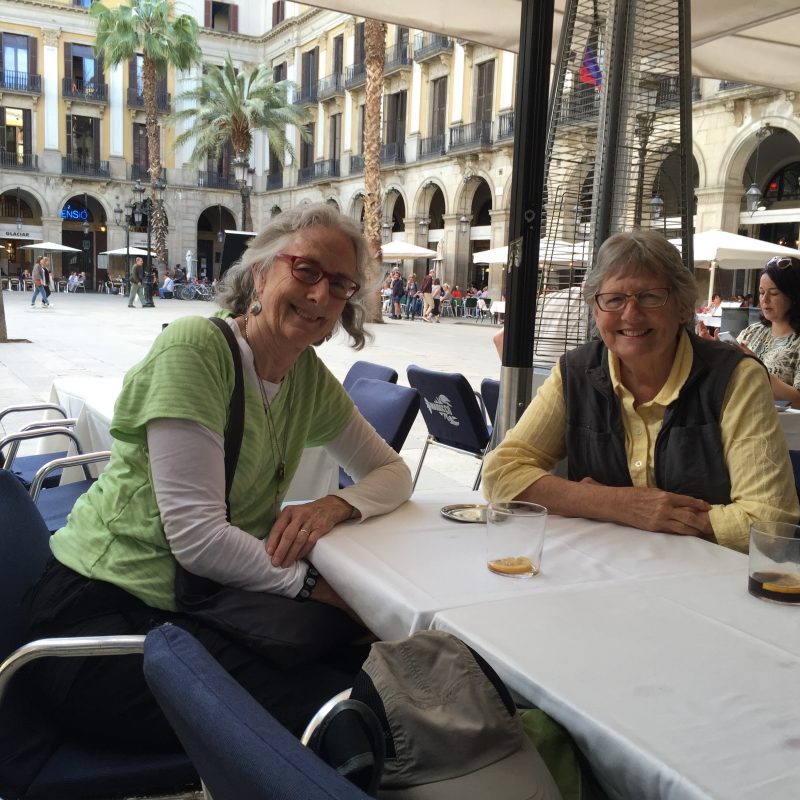
Paula Sullivan and I set out for Spain in Spring, 2016. Paula wanted to experience Easter (Santa Semana) in Seville, and I wanted to search for the Juderias, the medieval Jewish neighborhoods. I had been studying the three Abrahamic religions of medieval Spain for decades. We both were on the trail of the Templars. This search led us on a fascinating month journey. 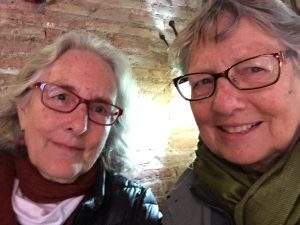
We were greeted in Madrid with a large sign “Refugees Welcome!” Since Spain had been unwelcome to non-Christians during the 15th century Inquisition, it was heartwarming to see the welcome for those fleeing the war in the Middle East at this time.
Spain has been a mecca for me for fifty years. In 1960, I went there for the first time and had a powerful inner experience in Cordoba. I can’t describe the pull Spain has for me, and I ask myself if it is the past calling or is there something in the future beckoning? The second trip was in 1978 when our family camped in Spain and Portugal. The third was in 2004 when I spent a week in language school in Barcelona, then met my daughters, Andrea and Sonya, for an exploration of southern Spain. In 2007, I attended a conference on the Esoteric Quest of Andalucia in Granada, attending lectures on esoteric Islam, Judaism, and Christianity. This trip with Paula is my fifth time in Spain, and each time confirms my connection with this land and culture,
Highlights of our journey:
Madrid: We visited the museums and sauntered along the grand avenues, explored the markets, and followed an historic walk through the city. However, as we approached a museum admission booth, I reached into my purse for my wallet, and discovered it was missing. My money belt had been stolen in Nairobi, Kenya. Now, again, I was dealing with theft. How could this happen? My purse had three zippers. How could anyone know in which pocket my wallet was kept? We weren’t in any crowds, and neither of us saw any suspicious person following me. It’s a mystery! Paula and I retraced our steps to the café where we had eaten breakfast. No luck! We spent several hours in the police headquarters, filing a report. I cancelled my credit cards, but luckily, I had my money belt on, and my passport was secure. We then went back to the museum and spent quite a lot of time absorbing Picasso’s painting of Guernica, depicting the bombing during the Spanish Civil War. He expresses the horror of war so powerfully with the emotions and symbols woven together like a tapestry of human tragedy.
Toledo: One of my favorite places in the world. As soon as we arrived at the train station, we were aware of Muslim-influenced architecture with its intricate lacy designs and the tiles covering the inside walls and floors. I can imagine scholars standing around a library table translating Aristotle into Hebrew, Latin, Greek, Spanish and other languages. From my journal: “Toledo is like a poster stamp of medieval Spain – the juderia is well constructed, and one can walk to the Synagogue Transito as well as Santa Maria de la Blanca which was formerly a synagogue, then a mosque, and now a church. As we walked the pinkish cobbled streets with the golden buildings, the whole old section seemed to invite our participation. This section had been destroyed by the Christians when they took it over, and they used the buildings as a quarry to build churches. This is a theme that was echoed over and over again during our trip.”
We found a Templar exhibit based on secret documents in the Vatican saying that when the Church was trying the Templars, Pope Clement sent someone to defend them. Interesting fact to add to our research.
Cordoba: The synagogue was built by Mudejar craftsmen during a period of religious tolerance after the Christian Reconquest of Cordoba in 1236. During Muslim times, Cordoba’s sizable Jewish population was welcome in the city, though its members paid substantial taxes. The statue of Maimonides is at the entrance to the Jewish quarter. The mosque here, with its striped arches, is one of the largest in the world. The Christians closed up the walls and created a church in one section. We went very early in the morning and attended a mass there, and again in the afternoon, when we focused on the architecture and tried to imagine the gatherings of Muslims attending services at this cosmopolitan city of the Islamic empire.
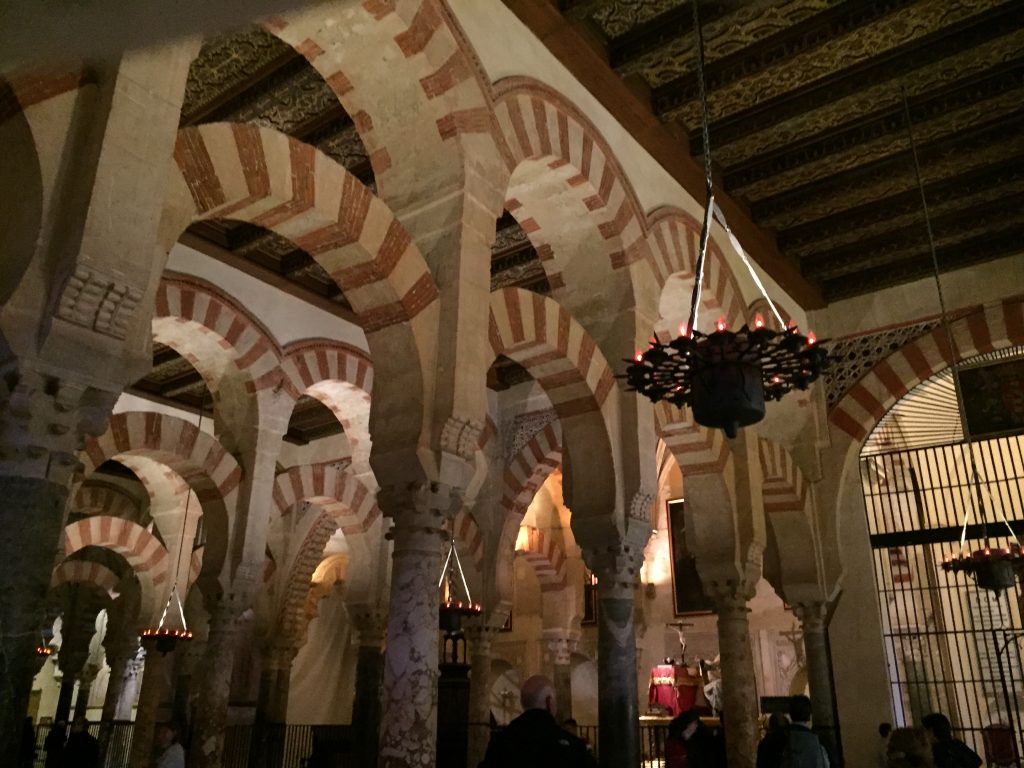
Seville: We stayed inside the Juderia, which had been a significant community of merchants, doctors, and bankers, flourishing under Muslim rule. After Seville was taken over in 1248 by King Ferdinand III, Jews were given protection by Spain’s kings and allowed a measure of self-government, although they were confined to live in the Juderia, forming a ghetto. There were three expulsions of the Jews, the most horrible was the pogrom when 4,000 Jews were killed, 5,500 Jewish families were driven from their homes, and synagogues were stripped and converted into churches. This area has since became known as the Barrio Santa Cruz. The final expulsion was in 1492 when Jews who were not driven out had to convert or be expelled to Portugal (and ultimately to Holland as well as other places). This map shows the migrations of the Jews as they were exiled from Spain. It explains why Italy, Greece, and Turkey developed significant Jewish centers with those Sephardic Jews from Spain.
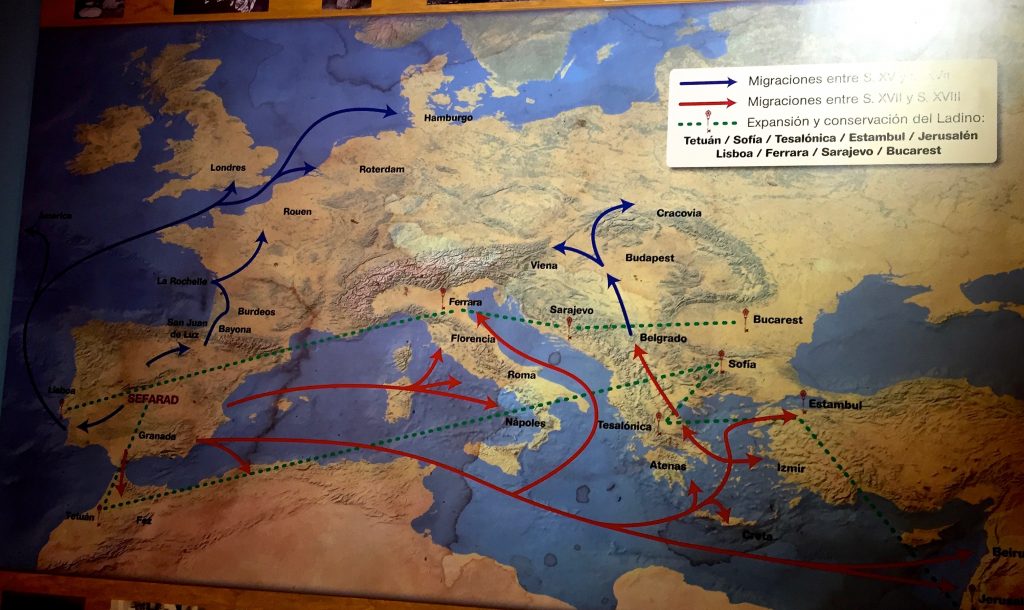
For five days, we followed the processions of Santa Semana, observing the scenes created by different congregations, and enjoyed outdoor cafes
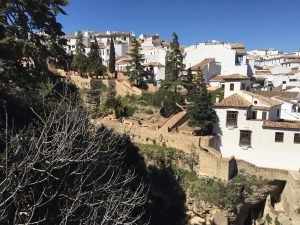 Ronda: We enjoyed this white village as we climbed up into a bell tower and down into a crypt, looking over the gorges, rivers, and large expanses of olive trees and orange trees.
Ronda: We enjoyed this white village as we climbed up into a bell tower and down into a crypt, looking over the gorges, rivers, and large expanses of olive trees and orange trees.
Granada: A glorious time exploring the city, living in the Albayzin, the Arabic quarter, climbing the hill to the Alhambra, visiting the former Jewish Quarter (the Realejo district), the spice market, and the Safarad Museum. The Alhambra is grand as it overlooks the city and river.
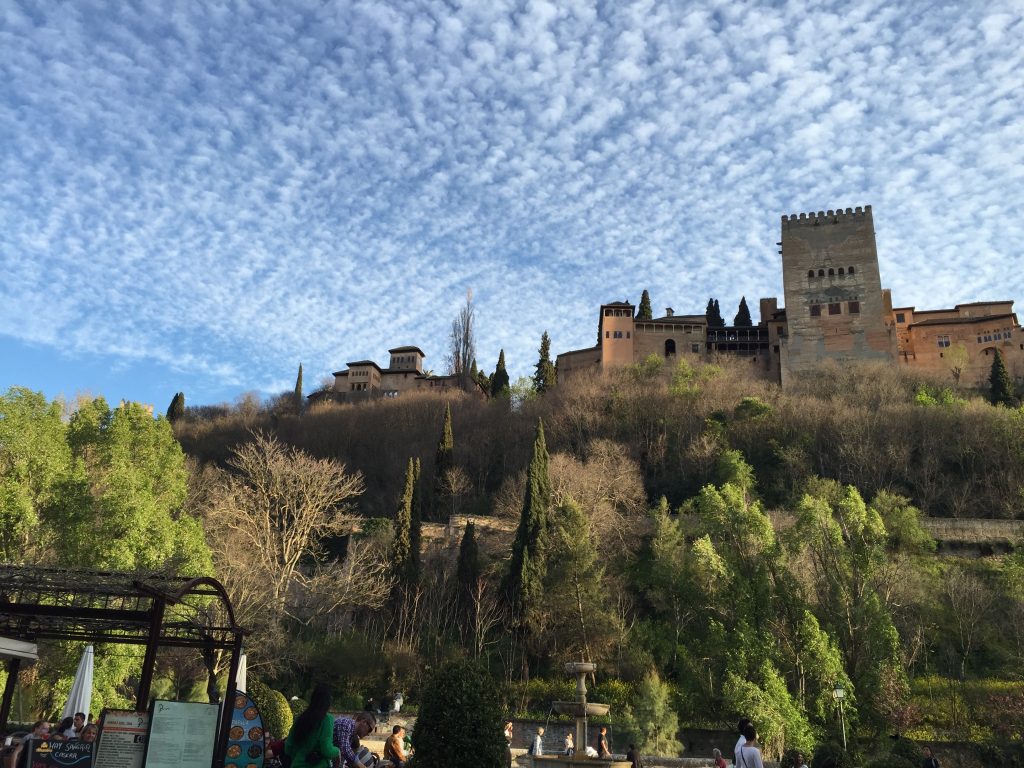
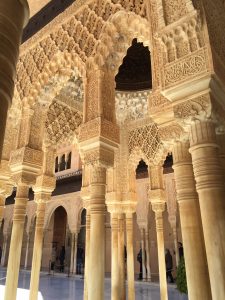
Each section of the Alhambra is magnificent with its lacy architecture, carved calligraphy, fountains, and gardens.
Northern Spain: We took the train north to Leon, admiring its cathedral’s magnificent stained glass windows. We went to nearby Ponferada, with its Templar castle commanding the area. This is one of the only Templar castles that is in good condition. We explored the exhibits and imagined the kinds of meetings that may have occurred there.
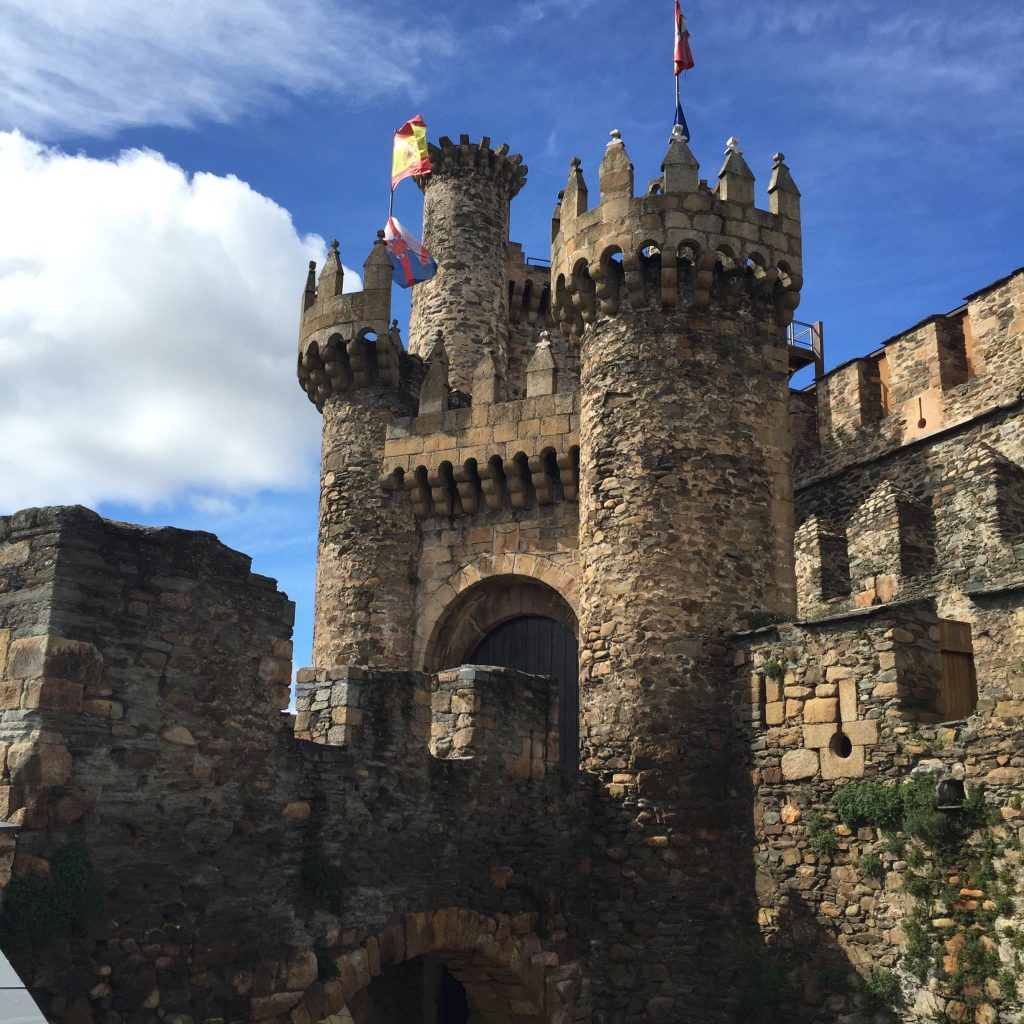
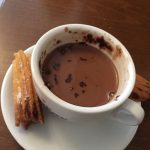
Then, by bus, we traveled to Finistre on the wind-swept Atlantic shore. We ended this section of our trip in Santiago, where on a rainy day, we visited the cathedral along with those who had completed the journey along the Camino.
Barcelona:
We flew to this amazing city, enjoyed walking through the neighborhoods, visited the work of Antonio Gaudi. The cathedral, La Sagrada Familia, is a like an symphony of color and form. Each neighborhood in Barcelona has its own atmosphere, and we had ample time to explore them. Of course, we also stopped in the afternoon to enjoy churros and hot chocolate.
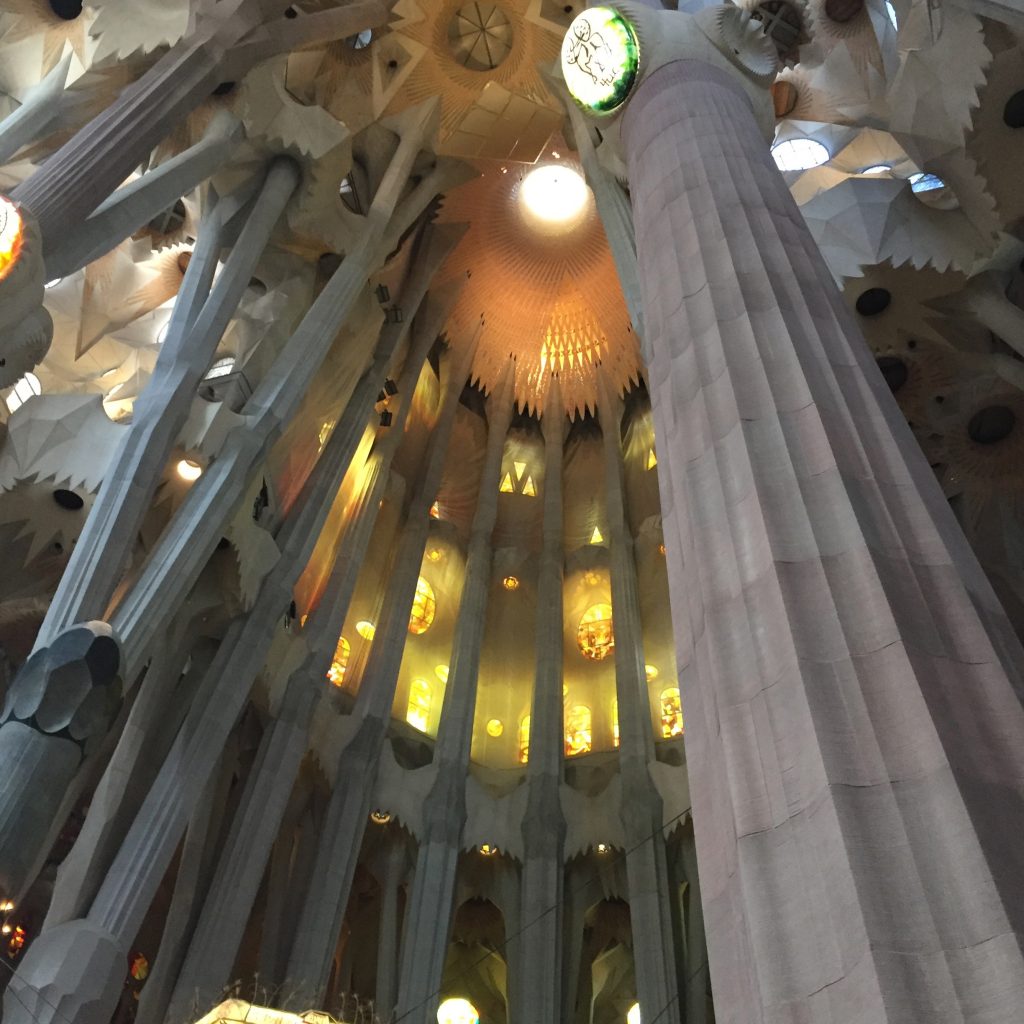
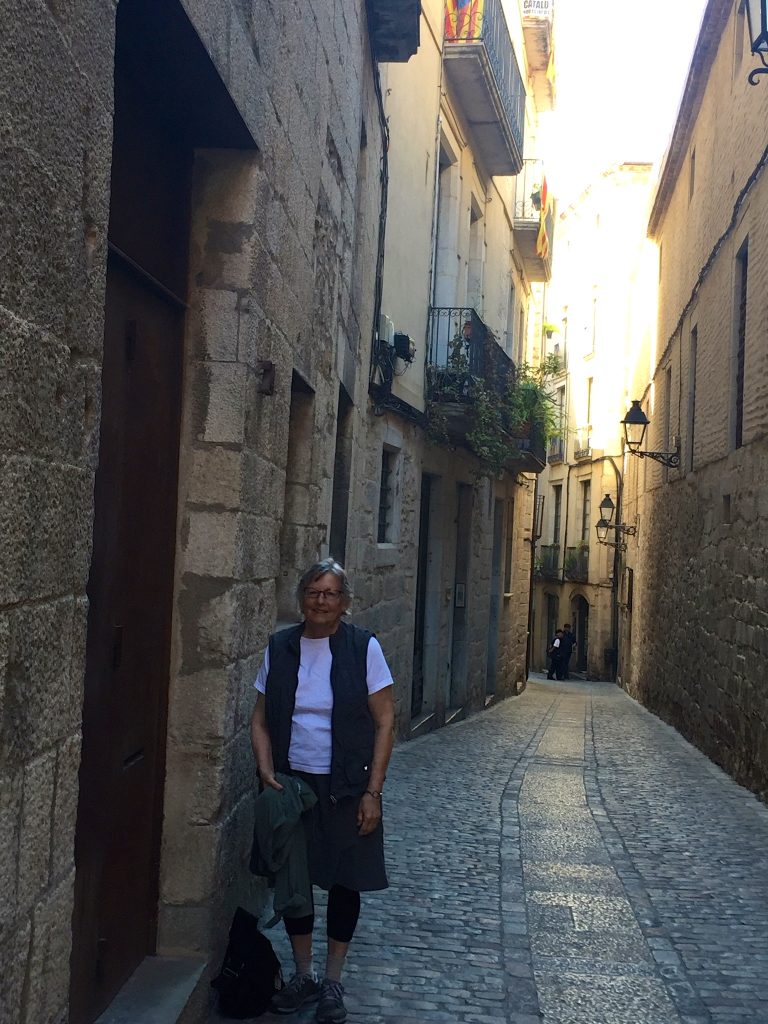
We made a side trip to Girona, a center of Kabbala during the Middle Ages. We wandered through the Juderia with its maze of narrow streets .
We were successful in fulfilling our intentions. In many cities, we found streets named for the Templars who had a presence there. Because we were in Spain during Easter, we experienced the processions with the reenactments of the crucifixion, and scenes created by different church groups. We lived inside some of the juderias, and we had significant conversations that expanded our research. In addition, we enjoyed the sun, the food, the people, and the time to drink in Spain. We hope to return again.